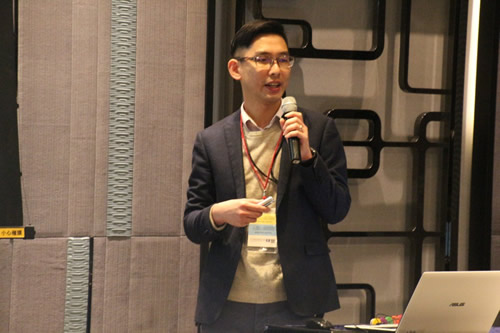ICEAS 2018 January
Royal Plaza Hotel , Hong Kong
January 24-26, 2018
Keynote Speech
Dr Louis N.Y. Wong
Associate Professor
Director, MSc in Applied Geosciences and PgD in Earth Sciences
Department of Earth Sciences, The University of Hong Kong
Presentation TitleAssessment of High Temperature Effects On Granitic Rocks by a Non-contact Colorimetry Technique
Introduction of Dr Louis N.Y. WongDr Louis Wong obtained his BSc degree in Earth Sciences from the University of Hong Kong in 1999; PhD degree post-doctoral training in Geotechnical and Geoenvironmental Engineering from MIT in 2008. Dr Wong was previously the Assistant Chair (Academic) in the School of Civil and Environmental Engineering at the Nanyang Technological University (NTU) in Singapore. He has extensive industry experience in Hong Kong, Singapore and the U.S.A. on a variety of slope engineering and underground construction projects.His teaching and research interests are in engineering geology, rock mechanics and underground engineering.
Dr. Wong has authored and co-authored more than 100 journal and conference publications. He is an editorial board member of the Journal Rock Mechanics and Rock Engineering (Springer), Journal Engineering Geology (Elsevier) and Bulletin of Engineering Geology and the Environment (Springer) and Journal of Rock Mechanics and Geotechnical Engineering (Elsevier). Dr. Wong won the Richard Wolter’s Prize from the IAEG (International Association of Engineering Geology and Environment) in 2014, and the 2012/13 Nanyang Education Award at NTU.
AbstractOne of the safety concerns in underground mining is fire safety. It is already known that fire would damage rocks to different degrees. Under a severe and long-lasting fire, the strength of the rock is much reduced, leading to a substantial reduction of integrity and supporting capacity. Retrofitting and repairing such severely damaged area is relatively straightforward by scaling the damaged block and erecting appropriate rock support measures. However, for rocks located at an intermediate distance away from the fire source, it will be hard to judge if the rock still possesses adequate capacity to support itself and the overburden. While coring samples out of an underground mine for fundamental tests would be the best and accurate way to determine the strength reduction, it is costly and time consuming. Retrieving intact samples of an adequate size is also challenging. Hence, a fast, non-destructive method for assessing the strength of a rock mass after a fire would be useful in deciding whether to salvage a mining operation or to abandon it.
Another alternative is to rely on index tests as an indirect means to determine the intrinsic rock properties. This presentation describes the application of colorimetry as a non-contact technique to estimate the heating temperature of rocks have experienced. This study investigates the use of a Digital Single Lens Reflex (DSLR) camera and MATLAB as a means of performing non-destructive testing on granite exposed to temperatures of between 200 ˚C to 500 ˚C to estimate the degradation of the rocks’ tensile strength. The CIE L*a*b* color space is used. The effects of soot and smoke on the rocks are also simulated using high temperature grease to mimic real world conditions. The results suggest that the colorimetry process is not only relatively cheap to use, as compared to expensive spectrometers and spectrophotometers, but also fast, as the photo taking process can be completed within 10 minutes.












